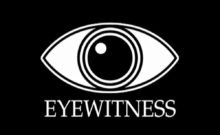I’m still brand-new to the freelancing world, and while I still have a long way to go to transform this side-gig into a full-time career. That being said, I feel like I’m already learning a lot about what I’m trying to do by reading what other people who’ve gone through the process have said. I thought I would compile some of the best stuff I’d come across into an easy-to-read list, fit for the freelancing beginner.
How do I make money?
If that’s not the question at the forefront of your mind, then you’re probably not going to last long in this arena. Let’s be honest. I have no clue how you do this. Clearly. But . . .
But . . .
There are smart people out there who make a ton of money doing different things with their writing. If you want to become one of those people, reading their thoughts on the matter couldn’t hurt.
“How Much Blog Traffic Do You Need to Make Money?” by Joseph Hogue is a great place to start, even if you don’t see a future for yourself in blogging.1 Of course, he’s trying to sell you guides to blogging better, but he makes the money to justify the sales pitch.
What I like about that article, in particular, is that it has a good conceptual framework for making money from blogging. It’s not something that just comes about, you have to put work in to make it happen. And the better your plan, the better the outcome.
I’ve also been reading an increasing amount of Kayla Sloan’s stuff recently. “7 Easy Ways to Decrease or Avoid PayPal Fees,” has some great ideas in it. If you’re already freelancing, Sloan has a guide to raising your rates that will help you make more money. You do have to sign up for her emails to get access, but it’s a worthy tradeoff, in my opinion. You can find that here.
Something I still struggle with is getting started and building up a client base. These aren’t easy things, because there’s no one way to do it, yet most paths require social acumen. You can’t just sit around in your room and hope it will come to you without any work on your part.
This article “How to Consistently Earn $100-200 per Day Working From Home,” has put some of that in perspective for me. At least, I have some ideas now that I didn’t have before.
If you took the time to read some of those articles, you’ve probably realized that you need a portfolio in order to achieve more success in landing clients. As Lindsay Van Thoen puts it, “You can’t get clients without a portfolio . . . but you don’t have a portfolio because you don’t have clients.” That seems like a catch-22, because it is. The real question is, how do you get around it?
How do I build a portfolio?
Lindsey’s article “How to build a portfolio from scratch (with little experience)” is a great place to start. I have a blog with a ton of stuff on it, some of it good, in my opinion, but after reading this article I realized that I need to do more if I want to be successful.
“How to Create a Client-winning Freelance Writing Portfolio (Even If You Have NO Experience!)” is another killer article about the same topic by Jorden over at Creative Revolt. Like other freelancers, some of her best content is hidden behind an email wall. I signed up for her emails to check out her piece, “How I turned my Freelance Writer Website into a client-generating machine.”
After reading it, I cannot recommend it enough. It really digs into the minds of the people who might want to hire you, and helps you think through the best ways to get them to reach out to you. You can sign up for her email list here.
And, maybe if you’re like me, you’re new to writing a ton every day. Part of the problem for me, at least, is that similar freelancing projects can take different amounts of time, based solely on how I’m feeling at the time. When your pay-per-hour is directly proportional to the speed at which you work, that can be a problem.
Time Management
Peggy Carouthers has some good ideas at The Write Life, in the article, “6 Time-Management Tips for Overwhelmed Freelance Writers.” Note: At the present moment, I am too busy freelancing to be overwhelmed. 🙂
Another great article on this topic is “17 No BS Time Management Hacks For Freelance Writers” by Elena at Hackerspace. There are some strategies in there that I’m going to try and apply in my own life.
Keyboards
Finally, I’m going to throw in some advice of own.
Get a decent keyboard.
If you got the cheapest option when you bought your computer, it probably doesn’t work that well. If you have a laptop, especially a Mac, there’s no way they’ve packed a good keyboard into that slender device.
Look for a keyboard with Cherry MX keys in it. These are known as mechanical keyboards. You’re also going to want to find a model with “NKRO,” which means that you can press every key on the keyboard at once, and it will pick up all of them, something that won’t be possible on a lower-quality keyboard.
Like so:
Ikhjlnu.abcdefgrstvxz t2
There are different kinds of keys that work differently. If you’re a serious typist, I recommend the “blues” or “browns.” Both have a tactile feedback, which is great if you’re a touch-typist. The blues are a bit heavier to hit, but make a “click” sound like a typewriter, which can be immensely pleasurable. If you need something quieter, the browns feel clickey without making as much noise.
Hopefully, something on this list will help you out in the same way these articles have been helping me. If there’s something great on a related topic that I should check out, be sure to leave a link in the comments section.
If you liked this post, be sure to check out:
Some Practical Tips on Productive Goal Setting
Writing Lessons Learned from Dungeons & Dragons



